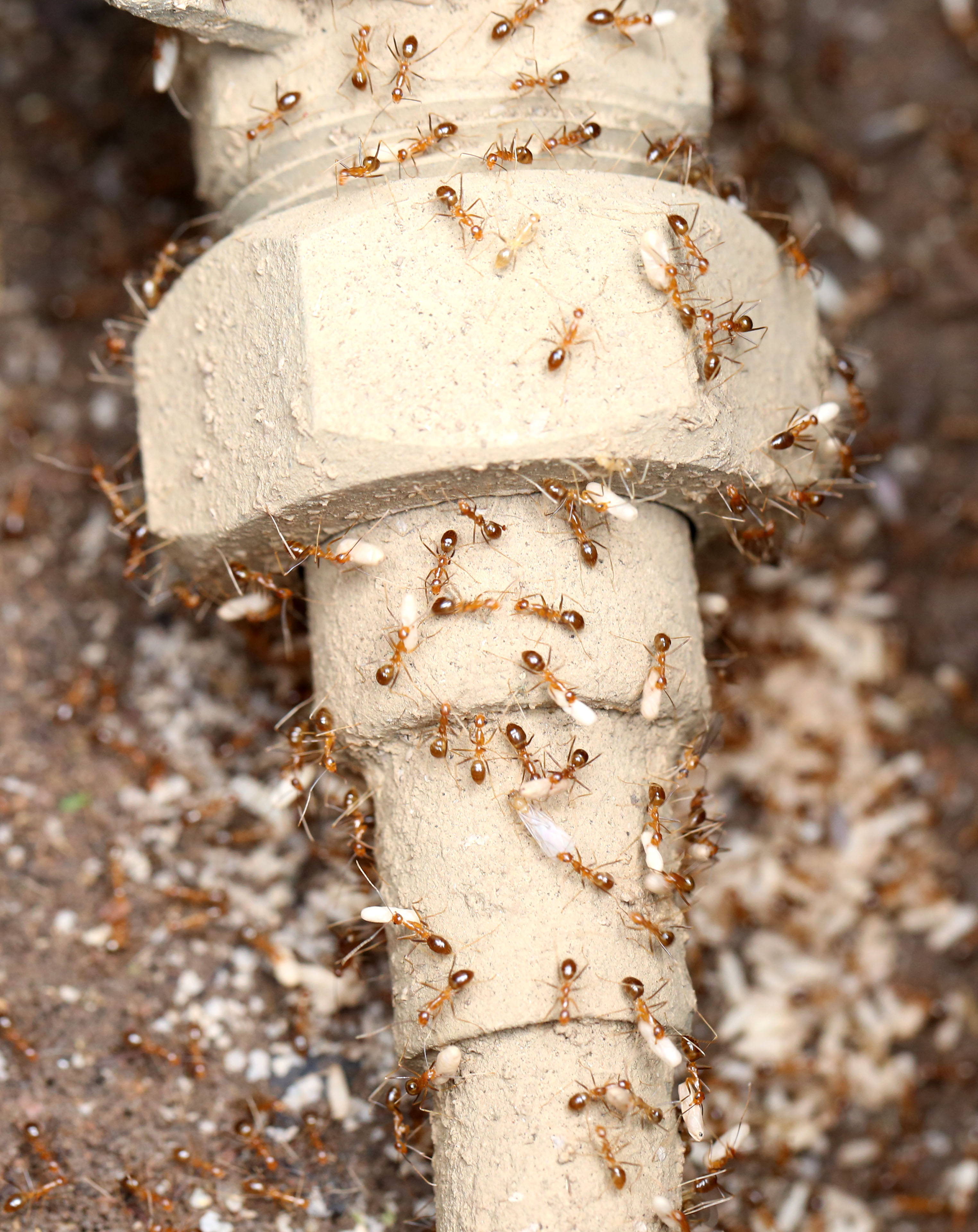
Yellow crazy ants
(Anoplolepis gracilipes)
The department has led the response to yellow crazy ants in the Lismore region since they were first discovered in May 2018. This is the only known infestation in NSW and is restricted to two sites - the Lismore central business district and Terania Creek, north of Lismore.
Following an extensive surveillance and treatment program both sites remained free of yellow crazy ants until a small colony was identified early in 2021. It was found in part of the Lismore CBD site. Ants have not been found at Terania Creek since 2019.
It is important to keep checking for yellow crazy ants in the Lismore area and other areas of the state.
How do yellow crazy ants affect us?
Yellow crazy ants are highly invasive and can build super colonies that devastate local flora and fauna and impact on agricultural and horticultural production.
They kill large numbers of native insects, frogs, birds, and lizards. The ants squirt formic acid into the eyes of their prey, blinding them before they attack. Small animals die from starvation due to blindness if squirted by the ants.
In northern Queensland they pose serious problems for sugar cane crops and native flora. The ants protect and farm scale, aphids and other sap-sucking insects to feed on their sugary secretions. This practice causes leaf mould and disease in sugar cane and can also change the composition of native vegetation and forests.
How to spot a yellow crazy ant
Yellow crazy ants are about 5 mm long and can be recognised by their:
- pale or golden yellow body colour
- dark brown abdomens, sometimes striped
- unusually long legs and antennae.
They are named 'crazy ants’ due to their frantic movements and frequent changes in direction, especially when disturbed.
Their nests are not obvious and are hard to spot.
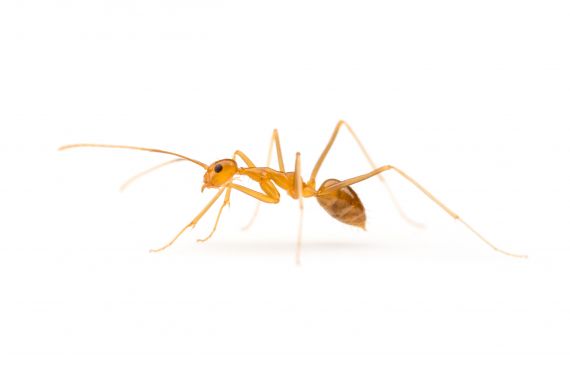
For more information visit the interactive Guide to Identifying Exotic Invasive Ants.
Where and when to look
Yellow crazy ants are active before rain and storms and can be found on, in or under:
- garden beds and edges, rock walls and fence lines
- trunks and leaves of trees and shrubs
- rocks and logs
- pot plants, leaf litter and mulch
- the ground, pavements and concreted areas
- car ports, pool filters, air conditioning units and pipes.
Seen them? Call us. 1800 680 244
Tell us about any suspicious sightings by visiting the online form.
If unsure it’s helpful if you can:
- collect a few ants in a container
- freeze them for 15 minutes then photograph them against a white background
- submit the photos via the online form.
Don’t disturb the ants or their nests or try to treat the infestation yourself or by using a pest controller, as the ants are likely to move to a new location.
If you find any ants you think could be yellow crazy ants please let us know as soon as possible - even if you are unsure or think we may already know about them.
How did they get here?
Yellow crazy ants spread quite slowly by themselves as they tend to walk rather than fly. An established super colony can double in size in 12 months.
They can spread quickly and over long distances when they hitchhike in and on materials and objects including:
- turf, lawn and garden clippings
- plants in containers and empty used plant pots
- mulch including bark, woodchips, hay and straw
- animal manure
- baled hay and straw
- gravel, sand and soil, including fill and clay
- machinery and other items that carry the above materials.
Always check for suspect ants and other biosecurity risks before moving these materials and make sure machinery and equipment is clean before moving between properties.
Treatment
- In order to effectively eradicate the ant, the department and its partners applied bait in and around the Lismore CBD and directly treated known nests and immediate area around the nest.
- Care was taken to ensure best practice application of the baits, following conditions approved by the Australian Pesticides and Veterinary Medicines Authority.
- Expert advice was also sought from Biosecurity Queensland who have extensive experience in applying ant baits.
- The best method for destroying YCA colonies is by using the broad-spectrum Granular insecticide, Fipronil. This is more commonly used on ants including Yellow Crazy Ant.
- The team applying the baits generally targeted vegetated areas so the baits would not be washed away. Hard surfaced areas were avoided however the baits were applied to surfaces where there were cracks that contain ed the product and prevented it from being washed away.
Fipronil is specifically designed to target invertebrate animals (animals without backbones) This product has been tested extensively and there is no evidence that Fipronil is harmful to humans.
The application method used, and the low-strength formulation chosen, present very low risk to non-target species.
Fipronil is not well absorbed by plants and is broken down by sunlight.
As part of the permit conditions the baits were not be placed near waterways or storm water drains.
Images
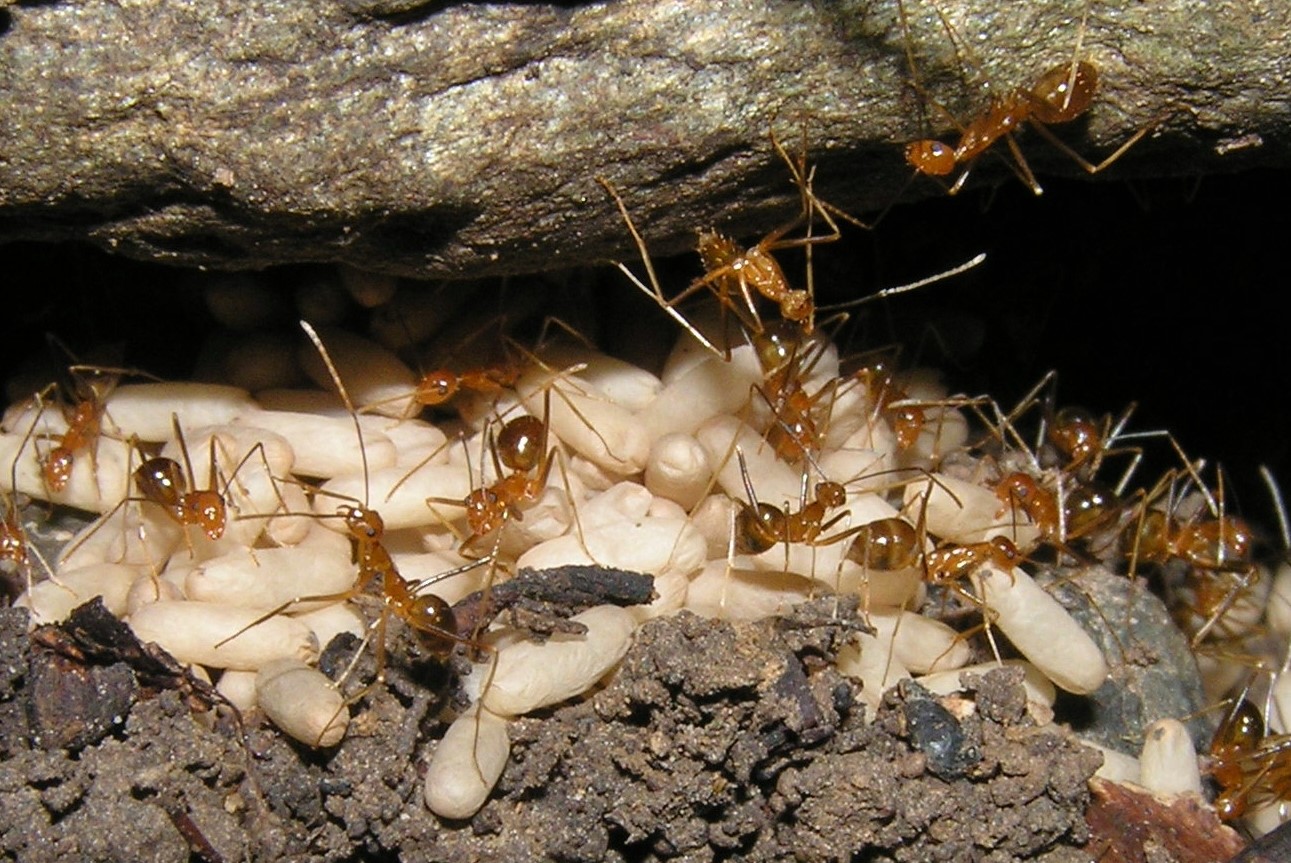
Yellow crazy ants nest beneath logs and rocks. Photo courtesy of The State of Queensland, Department of Agriculture and Fisheries.
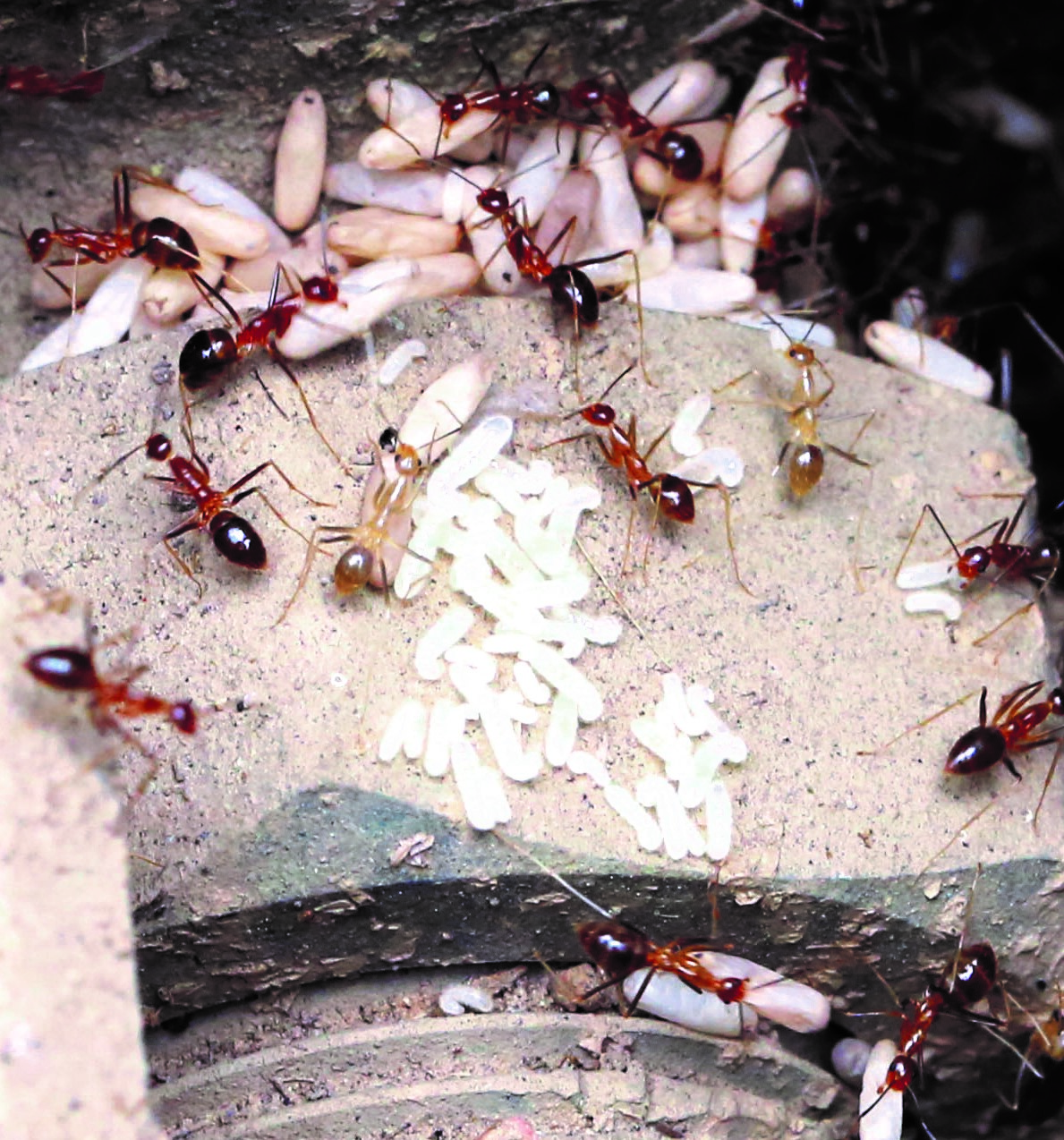
Yellow crazy ants and pupae. Photo courtesy of The State of Queensland, Department of Agriculture and Fisheries.
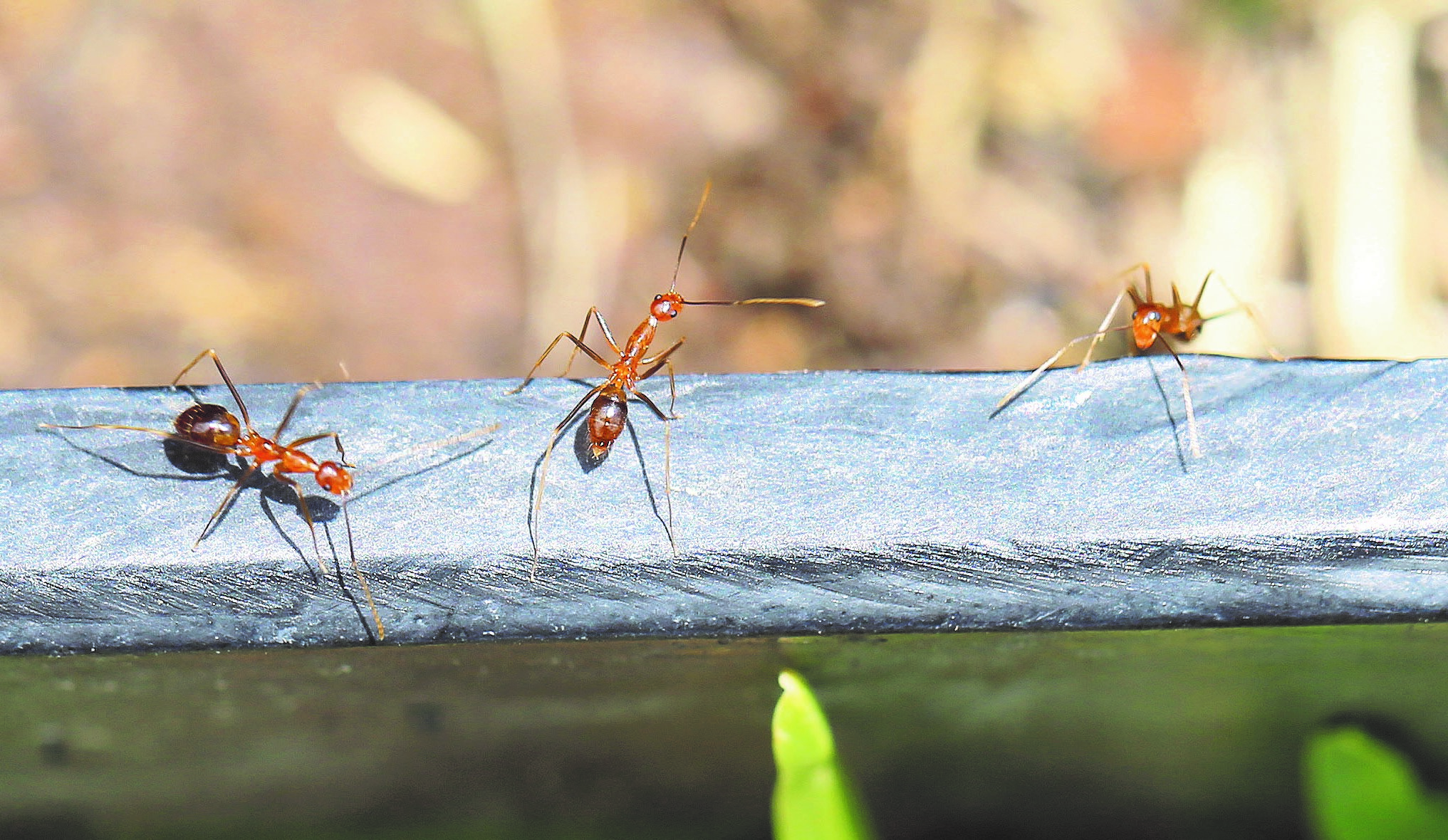
Yellow crazy ants have unusually long legs and antennae. Photo courtesy of The State of Queensland, Department of Agriculture and Fisheries.
Yellow crazy ants can live in and around pipes. Photo courtesy of The State of Queensland, Department of Agriculture and Fisheries.
Media releases
- Yellow crazy ant under surveillance in Lismore 15 April 2021
- NSW says good riddance to crazy pest 18 Dec 2019
- Yellow crazy ant controls to continue 21 June 2019
- Initial surveillance and baiting round wraps up 6 July 2018
- Further evidence of Yellow Crazy Ants 15 June 2018
- Crucial step to eradicate Yellow Crazy Ants 8 June 2018
- Yellow Crazy Ants - movement restrictions in place for Lismore 1 June 2018
- Yellow Crazy Ants confirmed in Lismore 24 May 2018

